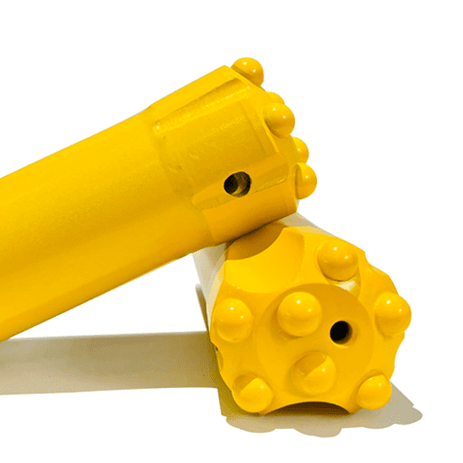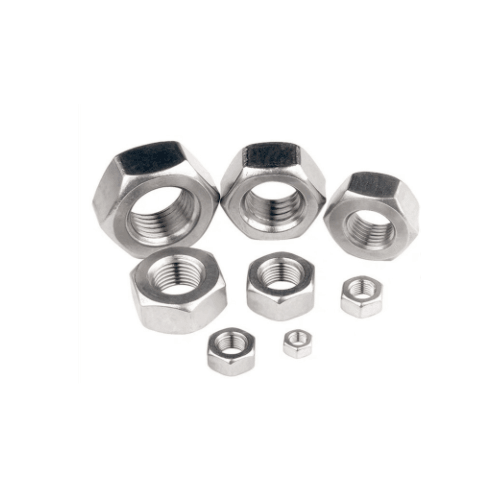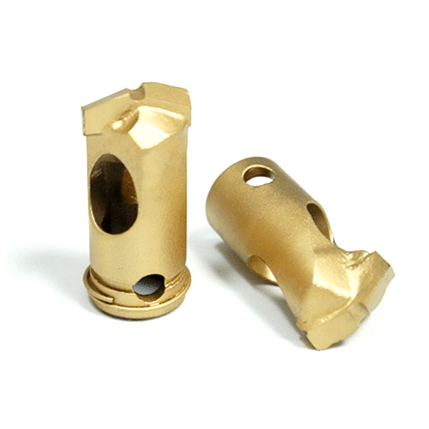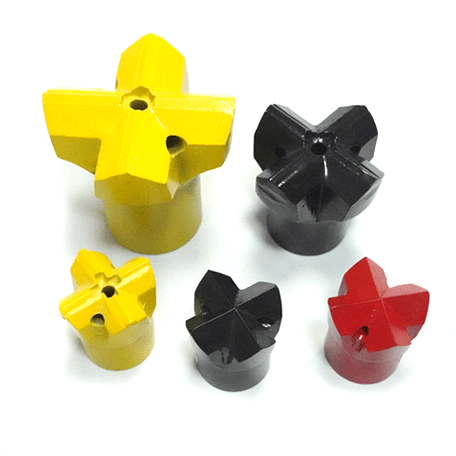Drilling into metal studs might seem daunting, but with the right tools and know-how, it becomes a breeze. This article is your go-to guide for selecting the best drill bit to effortlessly drill through metal studs, ensuring clean drill holes every time. We'll explore types of drill bits made for metal drilling, helping you tackle your projects like a seasoned professional. Ready to make drilling into metal easy? Let's dive in!
1. Why is Choosing the Best Drill Bit for Metal Studs Important?
When you're working on a project that involves metal studs, using the best drill bit isn't just a good idea—it's essential. Think about it: metal studs, often made of steel studs, are tough. They're designed to be strong and support structures. Trying to drill through metal with the wrong drill bit is like trying to cut butter with a spoon – frustrating and ineffective!
Using the wrong type of drill bit can lead to a whole host of problems. You might end up with drill bits that break easily, leaving you with snapped metal pieces and wasted time. Imagine struggling to drill holes only to find your drill bit is dull after just a few attempts. Not only is this inefficient, but it can also be dangerous. A broken drill bit can become a projectile, and forcing a dull bit and cause it to slip can lead to injuries.
The best drill bit for metal studs, on the other hand, is specifically designed for this task. It's made from stronger materials like cobalt steel or high-speed steel (HSS) that can withstand the hardness of metal. These bits drill cleanly and efficiently, saving you both time and effort. Choosing the correct metal drill bit also ensures a clean hole, which is crucial for secure fastener installation. Ultimately, investing in the best drill bit means smoother projects, less frustration, and safer working conditions.
2. What Types of Drill Bits Are Available for Drilling into Metal?
When it comes to drilling into metal, you're not short on options. There are several types of drill bits made to tackle metal drilling, each with its own strengths. Understanding these differences helps in choosing the correct drill bit for your specific need to drill holes in metal.
- Twist Drill Bits: These are perhaps the most common bits for drilling, and you likely have a drill bit set of these already. Standard twist drill bits are often made of high-speed steel (HSS). While high-speed steel bits are okay for softer metals, for steel studs and hard metal, you'll want to look for twist drill bits with cobalt or titanium coatings for increased hardness and heat resistance. They are versatile and bits work well for general purpose metal drilling.

-
Cobalt Drill Bits: Cobalt drill bits are a step up in hardness. They are made from cobalt steel, an alloy that’s incredibly resistant to heat. This makes them ideal for drilling into metal, especially tougher materials like stainless steel and steel studs. Cobalt bits maintain their sharpness even at high temperatures, meaning they last longer and perform better when drilling metal. If you're frequently drilling into metal, investing in a cobalt drill bit set is often the best choice.
-
Titanium Drill Bits: Titanium bits, or more accurately, high-speed steel bits with a titanium nitride coating, offer increased surface hardness and reduced friction. They are better than standard HSS bits but not as heat-resistant or durable as cobalt drill bits for hard metal. Titanium bits are a good middle-ground for general metal drilling tasks.
-
Step Drill Bits (Step Bits): Step drill bits, also known as unibits, are cone-shaped bits for drilling various sized holes in metal and sheet metal. They are excellent for creating clean, round drill holes of different diameters using a single bit. Step bits are particularly useful when you need to drill holes of varying sizes in thinner metal materials like sheet metal or metal stud framing.
-
Hole Saws: When you need to drill large holes in metal, a hole saw is the tool for the job. Hole saws are circular blades with teeth, designed to cut large diameter drill holes. For metal, you'll need hole saws specifically designed for metal drilling, often made of high-speed steel or cobalt. Using a hole saw requires a slower speed and plenty of cutting fluid to prevent overheating and damage to the bit and cause premature wear.
Choosing between these types of drill bits depends on the specific metal drilling task. For drilling into metal studs, cobalt drill bits are often the best all-around choice due to their durability and heat resistance.
3. Cobalt Drill Bits vs. Titanium Bits: Which is the Best Drill Bit for Metal Studs?
The debate between cobalt drill bits and titanium bits often arises when considering the best drill bit for metal. Both are designed to improve upon standard high-speed steel bits, but they cater to slightly different needs, especially when drilling into metal studs. Let's break down the key differences to help you decide which type of drill bit is often the best.
Cobalt Drill Bits:
- Material: Made entirely of cobalt steel, a super-hard alloy.
- Heat Resistance: Extremely high. Cobalt bits can withstand very high temperatures without losing their hardness or temper. This is crucial when drilling into metal, as friction generates a lot of heat.
- Durability: Excellent for hard metal and abrasive materials. Cobalt drill bits are less prone to chipping or dulling, making them long-lasting, even under heavy use.
- Performance: Cuts through metal without much effort, creating clean holes and requiring less pressure.
- Cost: Generally more expensive than titanium bits.
Titanium Bits (Titanium-Coated HSS):
- Material: High-speed steel bits with a titanium nitride coating on the surface. The core is still HSS.
- Heat Resistance: Improved over standard HSS, but not as high as cobalt. The coating reduces friction and heat buildup to a degree.
- Durability: The coating increases surface hardness and wear resistance, but once the coating wears off, you're back to the HSS underneath. Less durable than solid cobalt drill bits, especially for prolonged, heavy-duty metal drilling.
- Performance: Better than standard HSS for metal drilling, offering smoother cuts and longer life than uncoated bits.
- Cost: More affordable than cobalt drill bits.
Which is Best for Metal Studs?
For drilling into metal studs, cobalt drill bits are generally the best choice. Steel studs are moderately hard, and the heat generated during drilling into metal studs can quickly degrade less heat-resistant bits. Cobalt drill bits excel in these conditions due to their superior heat resistance and durability. They will last longer, require less frequent sharpening, and provide a more consistent performance when drilling into metal studs repeatedly.
While titanium bits are a decent option for lighter metal drilling tasks, for the demands of drilling into metal studs, especially if you're doing it frequently or professionally, the extra investment in cobalt drill bits is worthwhile. They will save you frustration and money in the long run by lasting longer and performing more reliably. If you are on a budget and only need to drill a few holes in metal, titanium bits might suffice, but for consistent, high-quality results when drilling into metal studs, cobalt drill bits are often the best.
4. What Size Drill Bit Do I Need to Drill Holes in Metal Studs?
Choosing the right size drill bit is just as crucial as choosing the right type of drill bit when drilling into metal studs. The size of the drill bit will depend entirely on the size of the fastener you plan to use. Whether you're installing screws, bolts, or rivets, the drill holes need to drill must be appropriately sized to ensure a secure and proper fit.
Matching Drill Bit to Fastener Size:
-
Screws: For self-tapping screws designed for metal studs, you often don't need to drill a pilot hole, especially for thinner gauge steel studs. The screw is designed to create its own hole. However, for thicker metal studs or if you want to make it easier to start the screw and prevent stripping, you might drill a pilot hole. The pilot hole should be slightly smaller than the screw's thread diameter. Refer to the screw manufacturer's recommendations for specific pilot hole sizes.
-
Bolts and Nuts: When using bolts and nuts, the drill hole size should match the diameter of the bolt. You want the bolt to pass through the hole easily without being too loose. If the hole is too large, the fastener will not be secure. If it's too small, you won't be able to insert the bolt. Always check the bolt diameter and choose a drill bit of the same size. For example, for a 1/4-inch bolt, use a 1/4-inch drill bit.
-
Rivets: Similar to bolts, the drill hole for a rivet should match the diameter of the rivet. Again, check the rivet specifications to determine the correct drill bit size.
Using a Drill Bit Size Chart:
A drill bit size chart is an invaluable tool. These charts list common screw and bolt sizes and recommend corresponding drill bit sizes for pilot holes or clearance holes. You can easily find these charts online or in hardware stores. They often include both fractional and metric sizes.
Pilot Hole Considerations:
While self-tapping screws are common for metal studs, drilling pilot holes can be beneficial in several situations:
- Thick Metal Studs: For thicker gauge steel studs, a pilot hole makes starting screws and bolts much easier and reduces strain on your drill and fastener.
- Precision: If you need to drill holes in an exact location of the stud, a pilot hole helps guide your larger drill bit and prevents wandering.
- Hard Metals: When drilling into metal that is particularly hard, a pilot hole can significantly reduce the effort required and improve the clean hole quality.
To drill a pilot, use a smaller drill bit, typically about half the diameter of the fastener you'll be using. After drilling pilot holes, you can then use a larger drill bit if needed, or directly insert self-tapping screws.
In summary, the drill bit size for metal studs is dictated by the fastener you are using. Always measure your fastener or consult a size chart to select the appropriate drill bit for creating precisely sized drill holes.

5. Step-by-Step Guide: How to Drill Through Metal Studs Effectively?
Drilling through metal studs effectively and safely requires a few key steps. By following these instructions, you'll be drilling into metal studs like a pro in no time.
Step 1: Gather Your Tools and Safety Gear
- Drill: A corded or cordless drill will work. For heavier gauge steel studs, a more powerful drill is beneficial. A drill press can also be used for more precise and controlled drilling, especially when you are using a drill press.
- Drill Bits: Choose the best drill bit for metal, ideally cobalt drill bits for durability. Ensure you have the correct size drill bit for your fasteners. Consider a drill bit set for versatility.
- Safety Glasses: Essential to protect your eyes from metal shavings.
- Gloves: To protect your hands and improve grip.
- Center Punch and Hammer (Optional): To create a starting point for your drill bit, especially useful for preventing the bit from wandering at the exact location of the stud.
- Cutting Fluid (Optional): Helps to cool the drill bit and workpiece, especially important when drilling slowly through thicker metal.
- Stud Finder: To locate the stud precisely and avoid unnecessary drill holes.
Step 2: Mark the Drilling Location
- Use a stud finder to accurately locate the stud. Many stud finders can detect both wooden studs and metal studs.
- Mark the exact location of the stud where you need to drill holes. Use a marker or pencil.
- If using a center punch, position it on your mark and gently tap it with a hammer to create a small indentation. This helps to guide the drill bit and prevent it from slipping, particularly on smooth metal.
Step 3: Start Drilling with a Pilot Hole (Optional but Recommended)
- If you're using larger fasteners or drilling into metal studs thicker than 20 gauge, start with a pilot hole. Choose a drill bit that is smaller than your final drill bit size.
- Begin drilling slowly at a low speed. Apply steady, even pressure. Let the drill bit do the work. Avoid forcing the drill, as this can overheat and damage the bit and cause it to break.
- If using cutting fluid, apply a few drops to the drilling area.
Step 4: Enlarge the Hole to the Desired Size
- If you drilled a pilot hole, switch to the drill bit of the final desired size.
- Continue drilling slowly, maintaining steady pressure. Keep the drill perpendicular to the metal stud for a straight drill hole.
- If you encounter resistance, don't force it. Check your drilling speed and pressure. Adding more cutting fluid can also help.
- For thicker metal, you may need to drill in stages, gradually increasing the drill bit size.
Step 5: Clean Up
- Once you've drill through metal, turn off the drill and remove the drill bit.
- Carefully remove any metal shavings from the drill hole and surrounding area. A brush or vacuum can be helpful.
- Inspect the drill hole to ensure it is clean and the correct size.
By following these steps, you can effectively drill through metal studs, creating clean holes for your projects. Remember to prioritize safety and take your time for the best results.
6. Do I Need to Drill a Pilot Hole When Drilling into Metal?
The question of whether you need to drill a pilot hole when drilling into metal is a common one. The short answer is: it often helps, and sometimes it's necessary, especially when drilling into metal studs. While self-drilling screws exist, drilling pilot holes offers several advantages, particularly for metal drilling.
Advantages of Drilling Pilot Holes in Metal:
- Accuracy: A pilot hole helps guide your larger drill bit to the exact location of the stud, preventing it from wandering or skating across the surface, especially on smooth metal. This is crucial when you need to drill holes in a precise spot.
- Easier Starting: Starting a larger drill bit directly on metal can be challenging. A pilot hole provides a pre-drilled indentation, making it much easier to position and start the larger bit.
- Reduced Drill Bit Stress: Drilling pilot holes reduces the amount of work the larger drill bit has to do. This decreases friction and heat buildup, extending the life of your drill bits, especially when drilling into metal studs repeatedly.
- Cleaner Holes: Drilling pilot holes often results in cleaner, more precise drill holes with less burring or tearing of the metal around the edges.
- Easier Drilling in Hard Metals: For hard metal like steel studs or thicker gauge metal, a pilot hole significantly reduces the force required to drill the hole. This makes the process easier and safer, especially when using a handheld drill.
- Preventing Drill Bit Breakage: Starting with a smaller drill bit reduces the chance of snapping larger drill bits, especially when applying pressure during the initial stages of drilling.
When Pilot Holes are Highly Recommended:
- Thick Metal: For metal thicker than 18 gauge, drilling pilot holes is highly recommended.
- Hard Metals: For steel studs, stainless steel, or other hard metal, always use a pilot hole.
- Large Diameter Holes: When drilling large holes in metal with hole saws or larger twist drill bits, a pilot hole is essential for guidance and easier starting.
- Precise Hole Placement: If accuracy is critical and you need to drill holes in a specific position, a pilot hole is invaluable.
When Pilot Holes Might Be Optional:
- Thin Sheet Metal: For very thin sheet metal (20 gauge or thinner), and when using self-drilling screws, pilot holes may not always be necessary. However, even in these cases, a pilot hole can still improve the quality of the drill hole.
In most cases, especially when drilling into metal studs, taking the extra step to drill a pilot hole is beneficial. It makes the drilling process smoother, extends the life of your drill bits, and results in more accurate and clean holes. It's a small investment of time that yields significant improvements in your metal drilling projects.

7. What is the Best Drill Speed for Drilling Metal Studs?
Drilling speed is a critical factor for successful metal drilling, especially when working with metal studs. Unlike wooden studs, metal conducts heat and can harden if overheated during drilling. Therefore, drilling slowly is generally often the best approach for metal.
General Rule: Slower is Better for Metal
The rule of thumb for drilling metal is to use a slower drilling speed compared to wood or plastic. Higher speeds generate more heat, which can:
- Overheat and Dull Drill Bits: Excessive heat can quickly dull the cutting edge of your drill bits, especially high-speed steel bits. Cobalt drill bits are more heat-resistant, but even they can be damaged by extreme heat.
- Harden the Metal: Steel studs, particularly some types of steel, can become work-hardened if they get too hot during drilling. This makes them even harder to drill through metal, and can lead to bit breakage.
- Reduce Hole Quality: High speeds can cause rougher drill holes with more burrs and jagged edges.
Recommended Drill Speed Ranges:
While specific speeds depend on the drill bit size and the type of metal, here are some general guidelines for drilling metal studs:
- Small Drill Bits (1/16" - 1/8"): Medium speed (around 1,500 - 2,500 RPM for a standard handheld drill).
- Medium Drill Bits (3/16" - 1/4"): Low to medium speed (around 800 - 1,500 RPM).
- Large Drill Bits (over 1/4"): Slow speed (around 400 - 800 RPM or even slower).
- Hole Saws: Very slow speed (under 400 RPM).
Using a Drill Press for Speed Control:
If you are using a drill press, you have more precise control over drilling speed. Drill presses often have speed charts that recommend specific RPMs based on drill bit size and material. Consult your drill press manual for guidance. Using a drill press allows for consistent and optimal drilling speed.
Tips for Controlling Drill Speed:
- Variable Speed Drill: Use a variable speed drill. This allows you to start slowly and adjust the speed as needed.
- Start Slowly: Always begin drilling slowly to create a starting point and prevent the bit from skidding.
- Listen to the Drill: Pay attention to the sound of your drill. If it sounds like it's straining or squealing excessively, you might be drilling too fast or applying too much pressure.
- Coolant/Cutting Fluid: Using cutting fluid helps dissipate heat, allowing you to drill at slightly higher speeds without overheating the bit and cause damage.
Experiment and Adjust:
The best drill speed is not always fixed. It can vary based on the specific metal stud, the sharpness of your drill bit, and the feed pressure you apply. Start with a slower speed and gradually increase it until you find a speed that cuts efficiently without excessive heat or vibration. If you notice your drill bit getting hot or the drilling is slow and laborious, reduce the speed. Finding the right drilling speed is key to efficient and effective drilling into metal studs.
8. Can I Use a Hammer Drill for Drilling into Metal Studs?
While hammer drills are powerful tools, designed primarily for drilling into masonry and concrete, using a hammer drill for drilling into metal studs is generally not recommended and can even be detrimental. Understanding the difference between a hammer drill and a standard drill is essential.
Hammer Drill vs. Standard Drill:
- Standard Drill (Rotary Drill): A standard drill uses only rotational force to cut through materials. It spins the drill bit to bore a hole. This is ideal for wood, plastic, and metal.
- Hammer Drill (Rotary Hammer Drill): A hammer drill combines rotational force with a hammering action. It not only spins the drill bit but also rapidly pulses it forward and backward along its axis. This hammering action is highly effective for fracturing brittle materials like concrete and brick.
Why Hammer Drills are Not Suitable for Metal Studs:
- Unnecessary Force: The hammering action of a hammer drill is not needed for metal studs. Metal is ductile, not brittle. The hammering action is designed to break up brittle materials, not cut through metal.
- Damage to Drill Bits: Using a hammer drill on metal can damage metal drill bits. The hammering action can cause excessive vibration and stress on the drill bit, leading to premature wear, chipping, or breakage, especially for twist drill bits.
- Oversized and Irregular Holes: The hammering action can make it difficult to control the drill bit precisely in metal. This can result in drill holes that are oversized, irregular, or elongated, rather than clean and round.
- Work Hardening: The excessive force and vibration from a hammer drill can induce work hardening in steel studs, making them tougher to drill through metal and potentially damaging your drill bit further.
- Inefficient Drilling: Using a hammer drill on metal is generally less efficient than using a standard drill with the correct metal drill bit. The hammering action is simply not the right mechanism for cutting metal.
When to Use a Hammer Drill (and When Not To):
- Use for: Concrete, brick, stone, masonry. Hammer drills excel at drilling into these brittle materials.
- Do NOT Use for: Wood, metal, plastic, drywall. For these materials, a standard rotary drill is the appropriate tool.
Using a Standard Drill for Metal Studs:
For drilling into metal studs, always use a standard rotary drill. Equip it with the best drill bit for metal, such as cobalt drill bits or high-speed steel bits designed for metal drilling. Use the correct drilling speed and apply steady, even pressure. This approach will provide much better control, cleaner drill holes, and less wear and tear on your tools and materials when drilling into metal studs. Avoid the temptation to use a hammer drill for metal studs – it's the wrong tool for the job.
9. Maintaining Your Metal Drill Bits: How to Keep Them Sharp and Long-Lasting?
Investing in quality metal drill bits, especially cobalt drill bits, is only half the battle. To get the best results and ensure they last, proper maintenance is key. Keeping your metal drill bits sharp not only improves their performance but also saves you money in the long run by reducing the need to drill with dull, ineffective bits.
Signs of a Dull Drill Bit:
- Slow Drilling: It takes significantly longer to drill the hole than it used to.
- Excessive Pressure Required: You have to push harder on the drill to make the bit cut.
- Squealing or Screeching Noise: A dull bit often produces a high-pitched noise during drilling.
- Overheating and Smoke: A dull bit generates excessive friction and heat, potentially causing smoke and discoloration of the metal.
- Rough or Burred Holes: Dull bits tend to create ragged, uneven drill holes with burrs around the edges.
- Metal Shavings Instead of Chips: Sharp bits produce clean chips of metal, while dull bits often create fine shavings or dust.
Methods for Sharpening Metal Drill Bits:
- Drill Bit Sharpener: For frequent metal drilling, investing in a drill bit sharpener is worthwhile. These tools are designed to accurately sharpen twist drill bits to the correct angles. They are relatively easy to use and can significantly extend the life of your drill bit set.
- Bench Grinder: A bench grinder with a fine-grit grinding wheel can be used to sharpen metal drill bits. This method requires more skill and practice to achieve the correct angles and avoid overheating the bit. It’s crucial to use proper technique and cooling to prevent damaging the bits.
- File or Whetstone: For minor touch-ups, a file or whetstone can be used to lightly sharpen the cutting edges of metal drill bits. This is a more manual and time-consuming process, best suited for occasional sharpening or field maintenance.
Tips for Maintaining Sharp Drill Bits:
- Use Cutting Fluid: Always use cutting fluid or lubricant when drilling metal. This reduces friction and heat, keeping the drill bit cooler and sharper for longer.
- Drill at the Correct Speed: Use the appropriate drilling speed for the metal and drill bit size. Excessive speed generates heat and dulls bits faster.
- Apply Consistent Pressure: Apply steady, even pressure while drilling. Avoid forcing the drill, which can overload the bit and cause it to dull or break. Let the bit do the cutting.
- Regular Inspection: Inspect your drill bits regularly for signs of dullness or damage. Sharpen them at the first sign of reduced performance, rather than waiting until they become completely blunt.
- Proper Storage: Store your drill bits in a drill bit set case or organizer to protect them from damage and keep them clean and dry. This prevents rust and keeps the cutting edges sharp.
By implementing these maintenance practices, you can significantly prolong the life of your metal drill bits, ensuring they remain sharp and effective for all your metal drilling needs. Sharp bits mean faster, cleaner drill holes and less effort for you.

10. Common Mistakes to Avoid When Drilling into Metal Studs?
Even with the best drill bit and proper technique, it's easy to make mistakes when drilling into metal studs. Being aware of these common pitfalls can help you avoid frustration, damage to your tools, and ensure successful metal drilling.
Mistake 1: Using the Wrong Type of Drill Bit
- Avoid: Using wooden studs or general-purpose drill bits for metal.
- Solution: Always use metal drill bits, preferably cobalt drill bits or high-speed steel bits specifically designed for metal drilling. Choosing the correct type of drill bit is fundamental.
Mistake 2: Drilling at Too High a Speed
- Avoid: Using high speeds intended for wood or plastic when drilling metal.
- Solution: Drill slowly and steadily. Higher speeds generate excessive heat, which dulls bits and can harden the metal. Refer to recommended drilling speed guidelines.
Mistake 3: Applying Too Much Pressure
- Avoid: Forcing the drill bit through the metal.
- Solution: Let the drill bit do the work. Apply steady, even pressure, but don't push too hard. Excessive pressure can overheat and break the bit or damage the metal.
Mistake 4: Not Using Cutting Fluid
- Avoid: Dry drilling without lubrication, especially on thicker metal.
- Solution: Use cutting fluid or lubricant, especially when drilling slowly through steel studs. Coolant reduces friction and heat, extending bit life and improving hole quality.
Mistake 5: Skipping Pilot Holes (When Needed)
- Avoid: Starting directly with a large drill bit, especially on hard metal or for precise drill holes.
- Solution: Drill pilot holes, especially for thicker metal studs or larger fasteners. Drilling pilot holes improves accuracy and reduces stress on larger bits.
Mistake 6: Using Dull Drill Bits
- Avoid: Trying to drill through metal with dull drill bits.
- Solution: Keep your drill bits sharp. Sharpen them regularly or replace them when they become dull. Dull bits are inefficient and can break more easily.
Mistake 7: Not Wearing Safety Gear
- Avoid: Drilling without safety glasses and gloves.
- Solution: Always wear safety glasses to protect your eyes from flying metal shavings and gloves to protect your hands and improve grip.
Mistake 8: Misjudging Stud Location and Metal Stud Spacing
- Avoid: Drilling in the wrong place or missing the metal stud entirely due to inaccurate locate the stud.
- Solution: Use a stud finder to accurately locate the stud and mark the drilling location precisely. Be aware of typical metal stud spacing to anticipate stud locations.
Mistake 9: Using a Hammer Drill
- Avoid: Using a hammer drill for metal studs.
- Solution: Use a standard rotary drill for metal drilling. Hammer drills are not designed for metal and can damage bits and create irregular drill holes.
By being mindful of these common mistakes and following the recommended practices, you can significantly improve your success rate when drilling into metal studs. Correct technique and the right tools are the keys to achieving professional-quality results.
Key Takeaways for Drilling Through Metal Studs
- Choose the Best Drill Bit: Cobalt drill bits are often the best for metal studs due to their heat resistance and durability. High-speed steel bits for metal are also a good option.
- Drill Slowly: Use a slow drilling speed to prevent overheating and dulling your drill bits.
- Use Pilot Holes: Drilling pilot holes improves accuracy, makes starting easier, and reduces stress on larger drill bits.
- Apply Cutting Fluid: Use cutting fluid to keep the bit and workpiece cool, especially for thicker metal.
- Maintain Sharp Bits: Keep your metal drill bits sharp by sharpening them regularly or using a drill bit sharpener.
- Use a Standard Drill: Avoid using a hammer drill for metal studs. Use a standard rotary drill.
- Safety First: Always wear safety glasses and gloves when drilling into metal.
- Locate Studs Accurately: Use a stud finder to precisely locate the stud before drilling.
By remembering these key points, you'll be well-equipped to drill through metal studs efficiently, safely, and like a true professional. Happy drilling!
Post time: 1 月-24-2025














